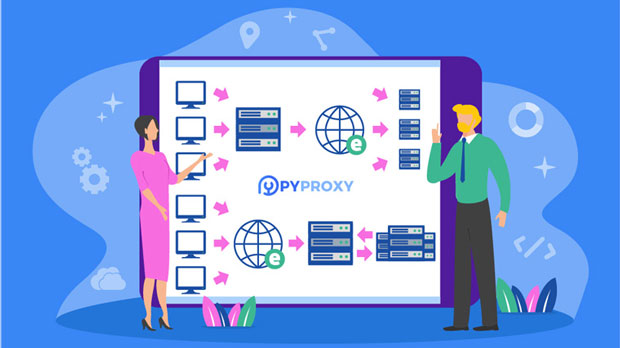How to buy SOCKS5 proxy for cross-border Internet access?
In an increasingly globalized digital world, accessing content across borders has become essential for many individuals and businesses. One way to achieve this is by using a socks5 proxy. socks5 proxies are particularly useful because they offer a flexible and secure way to bypass geographical restrictions, safeguard your privacy, and facilitate a smoother online experience. But how do you go about purchasing a SOCKS5 proxy to enable seamless cross-border internet access? This guide will walk you through the process, explaining everything from understanding what SOCKS5 proxies are, to choosing the right provider and setting them up for optimal use. Understanding SOCKS5 ProxiesBefore purchasing a SOCKS5 proxy, it is important to understand what it is and how it functions. SOCKS5 is the latest version of the SOCKS (Socket Secure) protocol, which is primarily used to route network traffic through a server to mask a user's location and encrypt data. Unlike traditional HTTP/HTTPS proxies, SOCKS5 proxies are versatile and support a wide range of internet protocols such as FTP, email, and peer-to-peer services.The key advantage of SOCKS5 is its ability to handle diverse types of traffic without needing to modify it. This makes it ideal for accessing content that might otherwise be unavailable in certain regions due to government censorship or geo-blocking. By routing your connection through a SOCKS5 server located in a different country, you can make it appear as if you are browsing from that region.Why Choose SOCKS5 for Cross-Border Internet Access?There are several reasons why SOCKS5 proxies are particularly suited for cross-border internet access. These include:1. Bypassing Geo-restrictions: Many streaming platforms, websites, or applications restrict content based on the user's location. A SOCKS5 proxy can change your IP address to make it appear as if you are browsing from a different country, enabling access to content that would otherwise be unavailable.2. Enhanced Privacy and Security: SOCKS5 offers a higher level of anonymity compared to traditional proxies. It doesn’t alter your internet traffic, which means that websites you visit won't know you are using a proxy, enhancing privacy. Furthermore, it supports secure tunneling, which can prevent data interception on untrusted networks.3. Improved Speed: Unlike other proxy types, SOCKS5 does not add significant latency to your connection. This makes it ideal for tasks like streaming, gaming, or large file downloads, where speed is crucial.4. Compatibility: SOCKS5 is compatible with a wide variety of applications beyond web browsing, including torrenting software, video streaming platforms, and email clients. This versatility makes it a solid choice for users with diverse internet needs.Steps to Purchase a SOCKS5 ProxyOnce you’ve decided that a SOCKS5 proxy is the right tool for cross-border internet access, it’s time to purchase one. Below are the essential steps you should follow:1. Choose a Reliable ProviderNot all proxy providers are created equal, and selecting a reliable one is crucial. Look for a provider that offers SOCKS5 proxies with strong performance metrics, such as speed, uptime, and security. Make sure that the provider offers servers in multiple locations, particularly in the regions you wish to access content from.2. Evaluate Pricing and PlansPricing for SOCKS5 proxies varies significantly depending on the provider and the services they offer. Some providers offer pay-as-you-go plans, while others provide subscription-based services. Compare different pricing models to see which fits your budget and usage requirements. Keep in mind that higher-priced proxies typically offer better speeds, more server locations, and more robust privacy features.3. Assess Security and Privacy FeaturesSince SOCKS5 proxies are often used to protect users' privacy, it’s important to evaluate the security features of your chosen provider. Check whether they offer encryption, a no-logs policy, and protection against DNS leaks. A reputable provider should also ensure that your data remains anonymous and isn’t shared with third parties.4. Check for CompatibilityMake sure the SOCKS5 proxy is compatible with the devices and applications you plan to use. Most proxies will work with popular browsers, but if you intend to use them for gaming, torrents, or other specialized applications, ensure they are supported. Some proxy providers offer detailed guides and customer support to help with setup across various platforms.5. Test Performance Before CommittingBefore making a long-term commitment, many providers allow you to test their proxies for a limited time or offer money-back guarantees. Use this period to evaluate the proxy’s performance, including its speed, stability, and ease of use. Make sure that the connection meets your needs for activities such as streaming, browsing, or downloading.6. Purchase the ProxyOnce you’ve completed the research and decided on a provider, it’s time to make your purchase. Choose a plan that suits your needs and make the payment. Most providers will accept major credit cards, PayPal, and sometimes even cryptocurrency for anonymity.7. Set Up Your SOCKS5 ProxyAfter purchasing the proxy, you will typically receive login credentials and server details (such as the IP address and port number). These details must be configured in the software or device you intend to use. Common setup procedures include entering the server’s IP and port number into your browser or application’s network settings.Many SOCKS5 proxy providers also offer detailed guides to help you with the configuration process, so follow these instructions carefully to ensure your proxy is set up correctly. You may also need to authenticate your proxy using the provided username and password.Optimizing Your SOCKS5 Proxy UsageAfter you’ve successfully set up your SOCKS5 proxy, you can begin using it for cross-border internet access. Here are a few tips for optimizing its performance:1. Select the Right Server Location: Choose a server located in the region you want to access content from. For instance, if you're trying to access content available only in the United States, connect to a SOCKS5 server based there.2. Use a Stable Internet Connection: A stable and fast internet connection will ensure you get the best performance out of your SOCKS5 proxy. While SOCKS5 doesn’t introduce significant latency, an unstable connection can still cause delays or interruptions.3. Stay Aware of Usage Limits: Some providers impose usage limits on their SOCKS5 proxies, such as bandwidth or data restrictions. Ensure you’re aware of these limits and avoid exceeding them to prevent service interruptions.Common Issues and TroubleshootingEven with the best providers, you may encounter issues from time to time. Here are some common problems and how to solve them:1. Connection Failures: If you’re unable to connect, check that you’ve entered the correct proxy details. Also, ensure that your firewall or security software is not blocking the connection.2. Slow Speeds: Slow speeds can sometimes occur if the server you are connected to is overloaded or too far from your physical location. Try connecting to a different server for faster speeds.3. DNS Leaks: If your real location is exposed despite using a proxy, there may be a DNS leak. To fix this, ensure that DNS requests are routed through your proxy server, not your ISP’s default DNS.ConclusionPurchasing and using a SOCKS5 proxy for cross-border internet access is a straightforward process that can greatly enhance your online experience. By following the steps outlined in this guide, you can ensure that you select a reliable provider, set up your proxy correctly, and use it to bypass geographical restrictions while maintaining privacy and security. Whether you’re streaming content, browsing the web, or using specialized applications, a SOCKS5 proxy can help you achieve seamless internet access across borders.
2025-01-09
























































